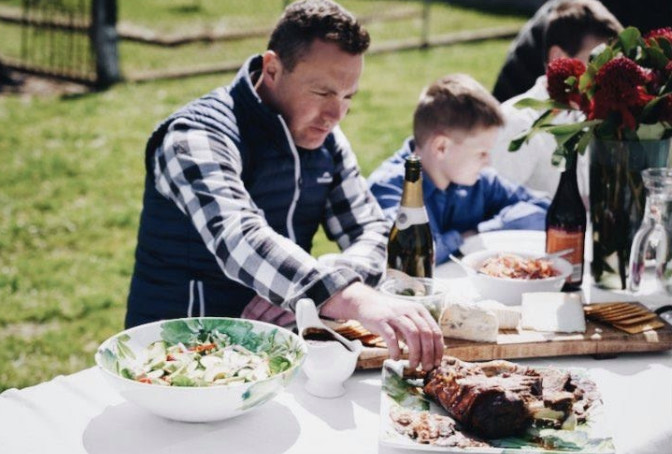The LOCKDOWN BOX is worth $200 with FREE DELIVERY for only $99. The LOCKDOWN BOX

What is the difference between Grass-fed and Grain-fed?
Should you eat meat from grass-fed or grain-fed animals? This big question tends to bring a lot of confusion especially if you do not know what entails the feeding process and the resultant effects. What these animals eat affects the overall nutrient composition of their meat.

The feeding process
All animals start with a milk diet in the first 7-9 months of their lives. Grass-fed animals proceed to feed on grass and pasture throughout their lives. Grain-fed animals are placed in feedlots where they are confined to stalls.
They feed on such grains as wheat, corn, soy, barley, and sorghum. These animals receive growth hormones and antibiotics to maximize their growth.
What is best for animals is to roam free and eat as nature intended not be injected or forced into feedlots.
Effect on quality and taste
The different diets contribute to the quality and taste of the meat. Grass-fed animals give beef that has slightly yellow coloured fat. The pigment in grass results in this hue. Though the meat quality is not affected, its flavour is more complex.
Grain-fed animals have beef whose fat is brighter and whiter. The meat is more marbled resulting from the high amounts of fat and sugar in the grains. The flavour of this beef is buttery.
Nutritive value
What these animals eat directly correlates to the nutrients in their beef. The table below summarizes the composition of fatty acids in their beef.
The omega-3 and Conjugated Linoleic Acid (CLA) have health benefits. This makes the beef from grass-fed animals more nutritious. It contains a higher amount of Vitamin A and E compared to beef from grain-fed animals. It is also rich in antioxidants. The beef from grass-fed animals tends to be leaner with a different texture.

Additional benefits of grass-fed animals
- On the environment – grass and other types of pasture do not require fertilisers and pesticides to grow. When animals graze directly on the pasture, they add to the soil’s fertility. This in turn reduces carbon emissions.
The same does not apply for grains. They have to be cultivated using monoculture farming and at times deforestation happens. The soil under grass retains a lot more carbon and organic matter within the ground as opposed to the soil under cultivation.
- For farmers – it is cheaper to feed animals on grass and pasture. You do not have to worry about purchasing or budgeting for their feed. Grass-fed animals rarely fall sick and so do not require constant veterinary attention.
- For animals – are healthy throughout their lifecycle and their meat is flavourful. The meat quality is unique and the nutritional value is high.
Is grass-fed or grain-fed beef more sustainable?
When you observe best practice in grazing, you enable significant carbon sequestration. This increases the soil’s biomass. You end up with more carbon in the soil, better water infiltration, and more soil microbes.
Grazing helps maintain a healthy ecosystem. The animal manure helps maintain the soil’s fertility by returning nutrients in the soil. Since the grazing ground is not cultivated, the grass is deep-rooted. It holds the soil well thus preventing soil erosion. All these lead to the ecosystem’s regeneration making grass-fed beef more sustainable.

Key Takeaway
This article has clearly elaborated that what goes into an animal determines the quality of its meat. Grass-fed animals provide beef that enhances your health. They also help maintain a healthy ecosystem. The numerous benefits highlighted above show that grass-fed beef is the way to go. Choose grass-fed animals and help keep your planet intact.
If you are conscious about your health, try out Castle Estate Meat.
Email: [email protected]
Phone: +61 3 5594 5222
Resources:











